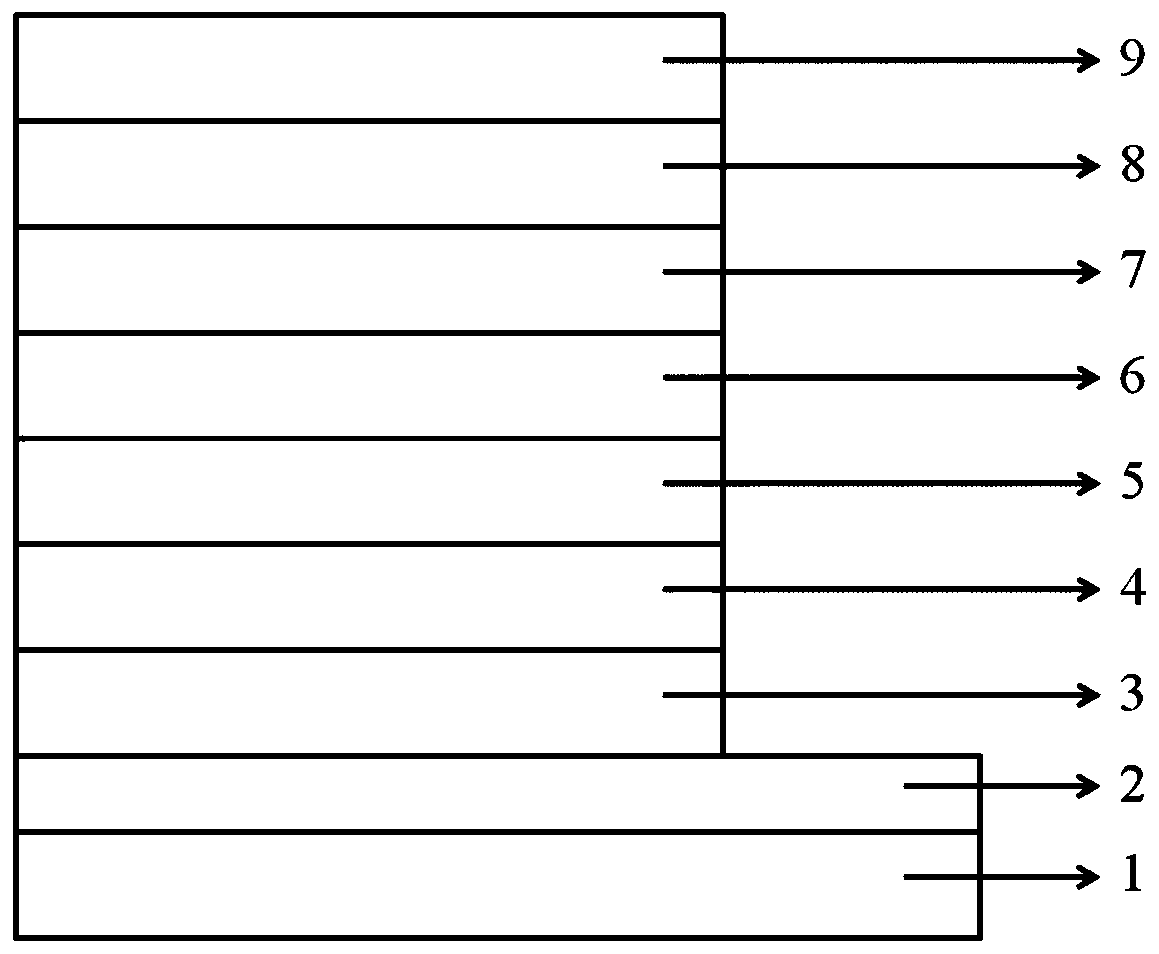An electroluminescent device based on boron-containing organic compounds
A technology of electroluminescent devices and organic compounds, which is applied in the field of long-life organic electroluminescent devices and high efficiency, and can solve the problems of efficiency roll-off, difficult exciton utilization, high fluorescence radiation efficiency, and reduction of material color purity. Achieve the effect of improving efficiency and reducing exciton quenching effect
- Summary
- Abstract
- Description
- Claims
- Application Information
AI Technical Summary
Problems solved by technology
Method used
Image
Examples
Embodiment 1
[0113] The structure of the organic electroluminescent device prepared in Example 1 is as follows: figure 1 As shown, the specific preparation process of the device is as follows:
[0114] Clean the ITO anode layer 2 on the transparent glass substrate layer 1, ultrasonically clean it with deionized water, acetone, and ethanol for 30 minutes each, and then treat it in a plasma cleaner for 2 minutes; dry the ITO glass substrate and place it in a vacuum In the cavity, the vacuum degree is less than 1*10 -6 Torr, on the ITO anode layer 2, a mixture of HT1 and P1 with a film thickness of 10 nm is evaporated, the mass ratio of HT1 and P1 is 97:3, and this layer is the hole injection layer 3; then, HT1 with a thickness of 50 nm is evaporated, and the layer As the hole transport layer 4; then vapor-deposit 20nm-thick EB1, which serves as the electron blocking layer 5; further, vapor-deposit a 25nm light-emitting layer 6, wherein the light-emitting layer includes a host material and a...
Embodiment 2~21
[0116] The preparation methods of Examples 2-21 are similar to those of Example 1, and the selection of specific materials is shown in Table 1.
PUM
| Property | Measurement | Unit |
|---|---|---|
| thickness | aaaaa | aaaaa |
| thickness | aaaaa | aaaaa |
Abstract
Description
Claims
Application Information
 Login to View More
Login to View More - R&D
- Intellectual Property
- Life Sciences
- Materials
- Tech Scout
- Unparalleled Data Quality
- Higher Quality Content
- 60% Fewer Hallucinations
Browse by: Latest US Patents, China's latest patents, Technical Efficacy Thesaurus, Application Domain, Technology Topic, Popular Technical Reports.
© 2025 PatSnap. All rights reserved.Legal|Privacy policy|Modern Slavery Act Transparency Statement|Sitemap|About US| Contact US: help@patsnap.com



